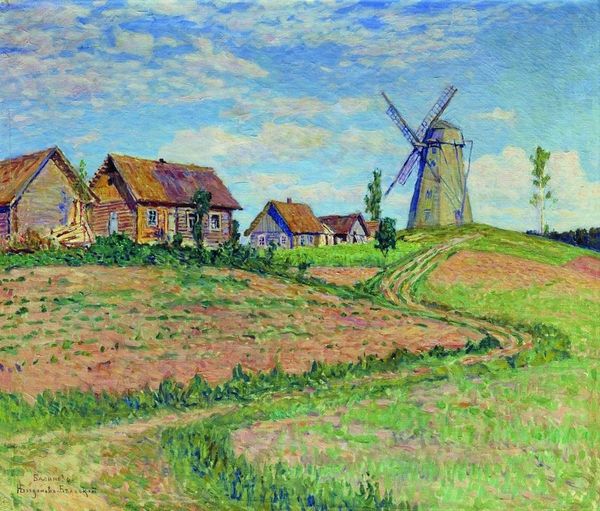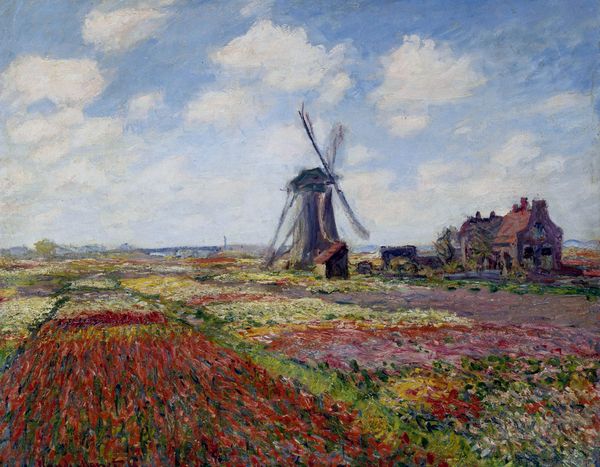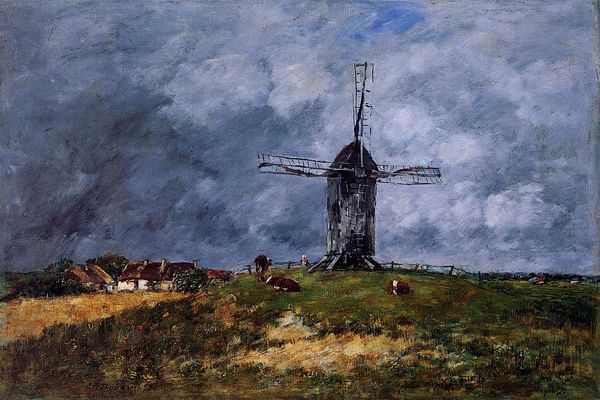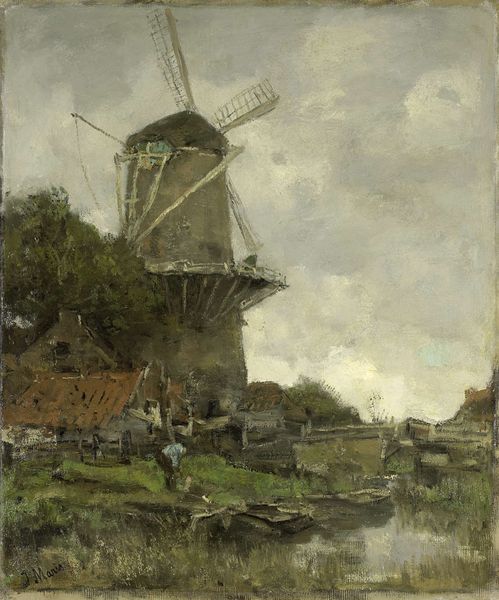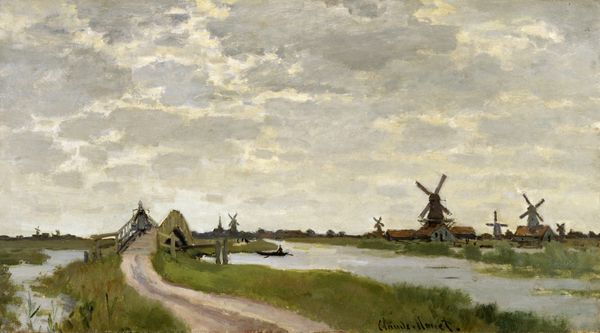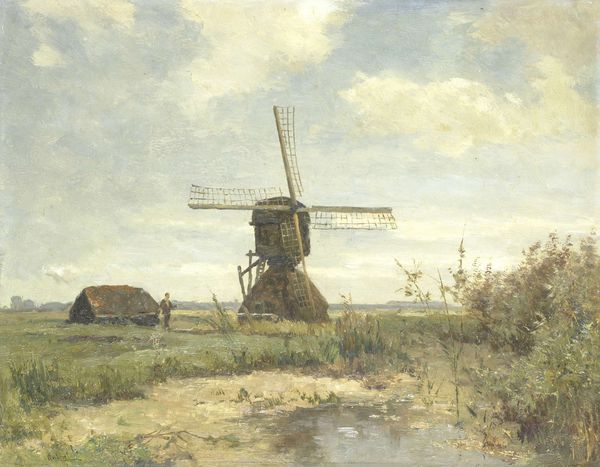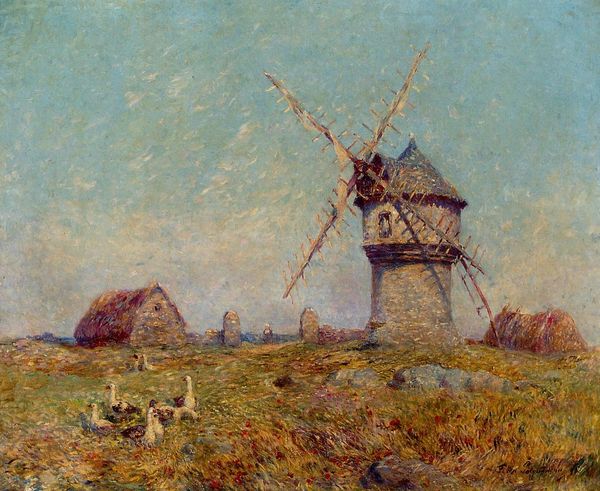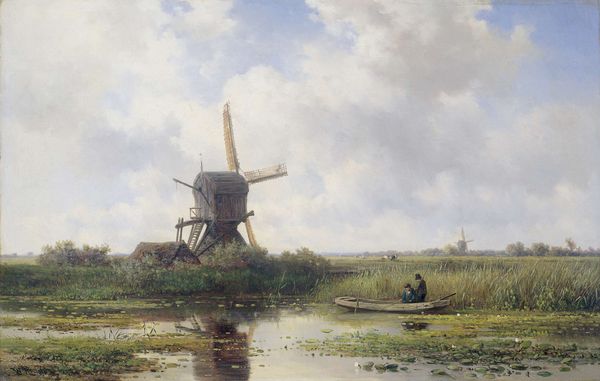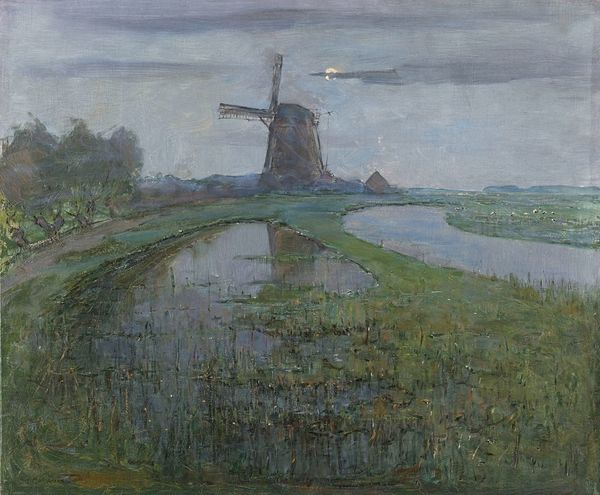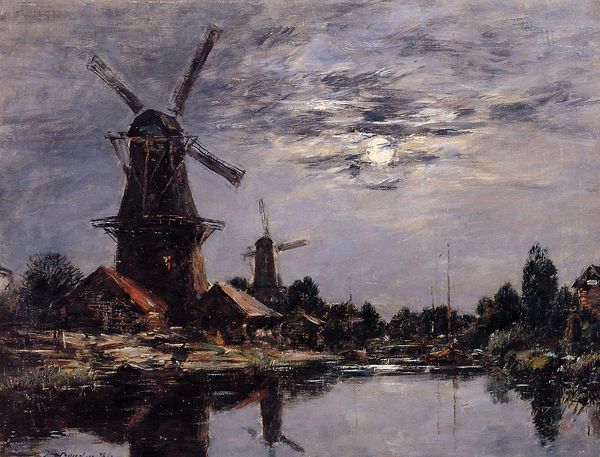
Copyright: Public domain
Curator: Looking at this landscape, there’s a dreamlike quality created by the hazy colors and soft edges. It's almost nostalgic. Editor: This is Camille Pissarro’s "The Knocke Windmill, Belgium," painted in 1902. Painted en plein air, it's a beautiful example of his Impressionist style. And more than that, I think it is crucial to read this painting through a critical lens of urbanization. Curator: Absolutely. Notice how Pissarro uses those small, broken brushstrokes. It's not about photographic realism but capturing the fleeting impression of light on the windmill, the fields, the figures in the foreground. How does situating it in that moment help us consider urbanism? Editor: Precisely. Pissarro repeatedly depicted rural settings confronting urban expansion throughout his career, offering powerful commentary on modernization. This motif reflected the era's deep social anxiety concerning land ownership and use. He presents the rural scene not as a pristine untouched paradise but as an active site reflecting societal struggles. He understood class struggles very well. Curator: I see that – the almost documentary feel alongside that impressionistic haze. Do you think Pissarro was making a specific social statement about industrial progress here? The workers pulling their cart might symbolize the working-class challenges of that period? Editor: Undoubtedly. We also see his work in tapestry with William Morris—and many other political statements in print media. Considering this windmill and church towering over the land within the wider framework of rapidly evolving industrialization—it evokes urgent questions about traditional community stability threatened during this tumultuous era. Curator: The use of light is masterful here. Notice how he diffuses light evenly so the windmill does not overpower, it is a gentle commentary. He connects it visually—and thus metaphorically—with the workers in the foreground. Editor: Yes, there is that constant play between objectivity and subjective perception, as if inviting a conversation rather than imposing judgment—encouraging thoughtful reflections upon societal flux. This work demonstrates how Impressionism could be deployed effectively toward socially engaged ends Curator: Thinking about how Pissarro engages those issues through technique really shifts my perspective of what I considered—upon first glance—a simple, lovely landscape painting. Editor: Indeed! Recognizing sociopolitical currents interwoven within works profoundly shapes meaning beyond formal analysis, thus enhancing awareness and deepening empathy when experiencing them!
Comments
No comments
Be the first to comment and join the conversation on the ultimate creative platform.

